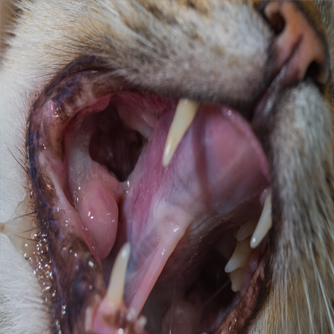Oral Tumors

The term tumor or cancer - can strike fear into any pet owner. If you pet has an oral mass it is important to determine if it is benign or malignant. Benign tumors usually do not invade bone or spread to other parts of the body. Malignant tumors can invade bone and may spread through the out the body. All tumors behave differently based on their type with some never spreading, some invading the tissues where they are, and some spreading out within the local tissues and some spreading to other areas of the body.
Oral neoplasias (tumors) account for 6% of all tumors in dogs and 10% of all tumors in cats. Of these, 50% are malignant in dogs and 90% are malignant in cats. Many oral masses look alike, whether benign or malignant. The key to successful treatment planning is early detection and microscopic evaluation (biopsy) of all oral masses. Small lesions may seem insignificant due to their size, but if the mass turns out to be malignant, obtaining adequate surgical margins without major structural loss is much easier with lesions less than 1 cm than those larger. In most cases, complete surgical removal of oral tumors early in the course of disease is the preferred treatment. Dental radiographs can be a valuable diagnostic tool when evaluating oral masses. The most common oral malignancies are: malignant melanoma, fibrosarcoma, and squamous cell carcinoma. Squamous cell carcinoma is the most common oral malignancy in the cat. If caught early, many of these oral tumors can successfully be removed surgically.

